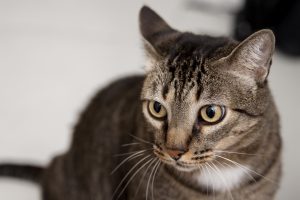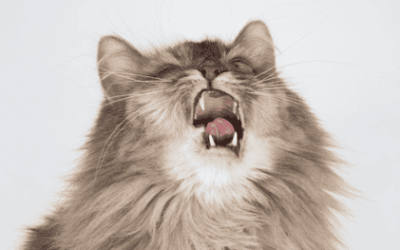Should You Get Pet Insurance for Senior Cats?

Introduction
As cats age, their health requirements may become more intricate and demand extra attention. This raises an important question for pet parents about whether it makes sense to purchase insurance for their senior cats? While some pet parents might think that insurance is only necessary for younger cats, the truth is that it can be extremely advantageous for aging cats as well.
When Is a Cat Considered “Senior”?
A cat is generally considered “senior” when they reach around 10 to 12 years of age. This is typically when they start to experience age-related changes in their health and behavior. However, it’s important to note that health issues can vary among cats, with some showing signs of aging earlier or later. Regular veterinary check-ups are essential during these senior years to monitor and manage age-related health issues.
Understanding the Needs of Senior Cats

As cats enter their senior years, they become more susceptible to various health issues, such as arthritis, kidney disease, and cancer. Treating these conditions can be costly, and without insurance, the expenses can rapidly accumulate.
Senior cats often require more frequent veterinary visits and diagnostic tests to monitor their health and catch any potential problems early on. Additionally, they may need specialized medications, surgeries, or emergency care. Pet insurance for your senior cat ensures you can provide them with the necessary care without worrying about the financial burden.
Benefits of Pet Insurance for Senior Cats
Pet insurance for older cats provides numerous advantages that can significantly strengthen their life.
Firstly, it covers various services, including regular veterinary visits, diagnostics, medications, surgeries, and emergency care. Comprehensive coverage ensures that your cat receives the best possible care without damaging your wallet.
Moreover, pet insurance for senior cats often includes coverage for pre-existing conditions if the cat developed those conditions once the policy was in place. If your cat develops a health issue while insured, it will likely still be covered for ongoing treatment. This is particularly important for senior cats, who are more likely to develop certain illnesses or conditions as they age.
Another benefit of pet insurance is that it may also cover alternative therapies, such as acupuncture or physical therapy. These treatments can be highly beneficial for senior cats, helping to manage pain and improve their overall well-being.
The Guide to Understanding Pet Insurance Plans
You may be unsure about which pet insurance plan to choose, especially if you have multiple pets. Additionally, you might be questioning whether pet health insurance is affordable and if the costs justify the benefits.
Let’s look at the most important terms when eyeing your best friend’s new pet insurance policy:
Pet Insurance Terms
- Accident – Unintended or unexpected event that results in injury.
- Chronic condition – Lifetime chronic condition that includes an illness or injury.
- Claim – Reimbursement request.
- Coinsurance – a small sum of money you must pay during a veterinary visit.
- Deductible – The sum must be paid yearly before veterinary services are rendered.
- Exclusions – Conditions or care that the policy does not cover.
- Maximum lifetime payout – The maximum amount of money that the insurance company will reimburse you during your pup’s lifetime.
- Maximum payout per incident – The amount paid out per injury or illness.
- Maximum payout per year – Also known as the “Annual Limit,” this is the maximum amount that is paid out on an annual basis.
- Medically necessary – Anything that’s needed relating to the illness or injury.
- Premium – Annual or monthly insurance payment.
- Pre-existing conditions – One of the most important things to consider when choosing a pet insurance company.
- Preventative care – Routine care such as vaccinations, flea and tick preventative medications, annual wellness exams, etc.
- Waiting period – Waiting time before insurance is activated. During this period, any issues that your pet has are not covered by your policy. Most waiting periods range from 3 days to 6 months, depending on the type of injury or illness.
What Is the “Reimbursement Rate” in Pet Insurance?
Reimbursement rates, sometimes called “coinsurance” rates, refer to the percentage of eligible expenses covered by pet insurance providers. When filing claims for covered veterinary expenses, this percentage determines what portion of the total bill will be reimbursed by insurance.
Assuming your pet insurance plan offers a 90% reimbursement rate, and your pet needs treatment costing $1,000, the insurer would reimburse 90% of eligible expenses, covering $800 of the final bill. This could leave you with a final bill as low as $200.
What Does “Deductible” Mean in Pet Insurance?
 A deductible is the upfront payment you must make out of pocket before your coverage kicks in. It acts like an initial threshold that must be crossed before your provider reimburses veterinary costs.
A deductible is the upfront payment you must make out of pocket before your coverage kicks in. It acts like an initial threshold that must be crossed before your provider reimburses veterinary costs.
Let’s say you have a policy with a $250 deductible, and your plan reimburses you 90% of eligible expenses. You will have to cover your pet’s veterinary visits and other medical costs until you’ve paid $250. Once this condition is met, your insurance plan will start paying 90% of the included services, and you will only be responsible for the remaining 20% until your plan resets.
When evaluating a pet insurance product, clarify whether the deductible is on an annual or per-visit basis. Some plans lower their costs by making the deductible apply for each visit to the vet instead of a yearly cap. This would mean that a $250 deductible would be used every time you visit the vet, which could add up and become much more costly over a year. Other plans, like Odie Pet Insurance, offer annual deductibles, which means you will only be responsible for $250 out of pocket, regardless of how many times you visit.
This is an essential consideration for pet owners, as you can get more value from an annual deductible. Alternative policy options from companies offering per-visit deductibles are only beneficial if a vet visit is costly.
What Are “Limits” in Pet Insurance?
Limits determine the maximum care expenses you can reimburse per policy year. Odie Pet Insurance, for example, offers two tiers of annual limits: $10,000 and $40,000.
Let’s say you selected a plan with a $10,000 annual limit. That means Odie will cover up to $10k in eligible claims within one policy year and reset on the policy anniversary date. It’s important to note that some policies have sneaky clauses that limit coverage per condition, regardless of your annual limit. For example, an insurance company may stop reimbursement for cancer-related expenses after $4,000, even if your yearly limit is $10,000. Odie offers transparent insurance coverage for your pet without per-condition limits.
Pet insurance helps decrease the financial burden of unexpected illnesses.
How Does Pet Insurance Work?
Pet insurance is similar to car or health insurance and should cover some or all of your veterinary costs. If you currently have a cat or dog living at home with you, you’ve undoubtedly discovered that veterinary expenses can be expensive. A comprehensive pet insurance plan can help soften the financial challenges of unexpected injuries or illnesses. These costs can be a financial strain and may lead to difficult decisions that a pet owner may regret later.
A comprehensive pet insurance plan can save you money in the long run by providing coverage for major medical or surgical procedures. Many chronic conditions persist over a long period, with no cure, but can be treated with medicine. These conditions may include:
- Diabetes
- Epilepsy
- Hypothyroidism
- Cancer
- Pain (also a chronic condition)
- Osteoarthritis
- Hip dysplasia
- Congestive heart failure
- Kidney failure
- Eye failure
- Hearing loss
- Cognitive dysfunction Syndrome
Getting Payment From The Pet Insurance Company
- Pay the vet bill during your visit.
- Submit a claim to your insurance company.
- Get reimbursed for a percentage of covered expenses (after your deductible is met)
Insurance companies (also known as “providers” or “carriers”) may need paperwork or a medical history review from your veterinarian to process your claim, so be sure to save all receipts and documentation you receive from your vet appointment.
💡 NOTE: Some providers will pre-approve you for an upcoming procedure and offer to pay the veterinarian directly, alleviating the initial financial burden.
Common Misconceptions About Pet Insurance for Senior Cats

One common misconception is that it’s too late to get insurance for an older cat. While it’s true that some providers have age restrictions, there are still options available for senior cats. It’s always possible to consider insurance. Odie, for example, does not have any upper age restrictions on cats they will insure.
Another misconception is that pet insurance is too expensive. While it’s true that pet insurance comes with a monthly premium, the cost can be significantly lower than the potential expenses of treating a senior cat’s health issues. Consider it an investment in your cat’s well-being and peace of mind.
What Expenses Does Pet Insurance Cover for Your Cat?
Various plans are available for insuring your pet, each with its own coverage alternatives and advantages. Let’s discuss three distinct kinds of insurance policies that may be purchased for cats:
Injury & Illness Pet Insurance
Odie’s Injury and illness pet insurance covers unexpected veterinarian costs connected to damage or disease, such as those incurred due to accidents, illnesses, or inherited disorders. Although the specifics of coverage might vary from one plan to the next, most policies include coverage for diagnostic procedures, medicines, surgical procedures, hospitalization, and emergency care.
Accident-Only Pet Insurance
This Odie Accident Only pet insurance covers only injuries caused by accidents, such as fractured skulls, bite wounds, or ingesting foreign substances. It’s possible that it won’t cover preexisting ailments or illnesses.
Wellness and Routine Pet Care Plan
Odie’s Wellness Plan (add-on to a basic plan) pays for preventative veterinarian care, which includes yearly checkups, vaccines, flea and tick prevention, and dental cleanings/examinations. Spaying and neutering may also be included under some policies.
How Much Does Pet Insurance Cost?
The costs of pet insurance are highly variable and rely on several factors, such as the age of the pet, the breed, and the coverage options. Odie Pet Insurance provides several plans, each with a unique combination of coverage and premiums.
The monthly premiums for Odie’s pet insurance for cats may range from $15 to $50 on average, and the coverage determines the price and plan the customer chooses.
When determining the cost of cat insurance, owners must evaluate the various policies offered and consider the degree of protection their furry buddy needs.
Read more about the limits and benefits of your pet insurance here.
Pet insurance is not just for kittens or young cats; it is equally important for senior cats. As they grow older, our furry friends are increasingly susceptible to various health problems, which can be expensive to manage. When choosing pet insurance for your senior cat, consider their specific healthcare needs, compare different insurance providers and policies, and consider alternatives if insurance is not the right fit. Remember that the decision comes down to what is best for your cat and your financial situation.
So, if you have a senior cat, consider getting them the protection they deserve. Pet insurance can provide the necessary coverage and peace of mind to ensure that your old cat receives the best possible care throughout their golden years.
*Updated April 19, 2024



